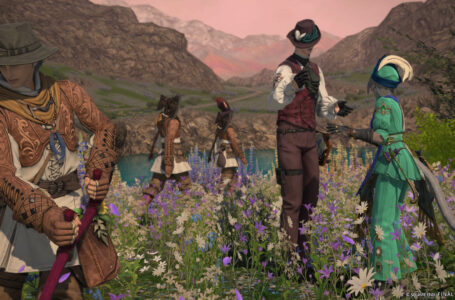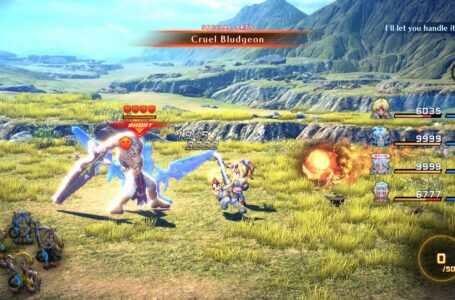Final Fantasy fanservice in Stranger of Paradise
Stranger of Paradise: Final Fantasy Origin is many things. It is not, as some people assumed following its reveal and early demos, “Final Fantasy Souls”. But that doesn’t matter, because the things it actually is are many, varied and endlessly fascinating. And, as a complete game, it is both an absolute delight to play, and a genuine pleasure to enjoy from the perspective of a longstanding series fan. So let’s dive in to a look at the game’s early hours.
As you can’t fail to have noticed from the number of tedious memes it spawned — the Internet does love repeating things over and over on the assumption that doing so makes them “funny”, after all — in Stranger of Paradise: Final Fantasy Origin, you play Jack, an angry young man who is rather adept at fighting in a variety of different styles.
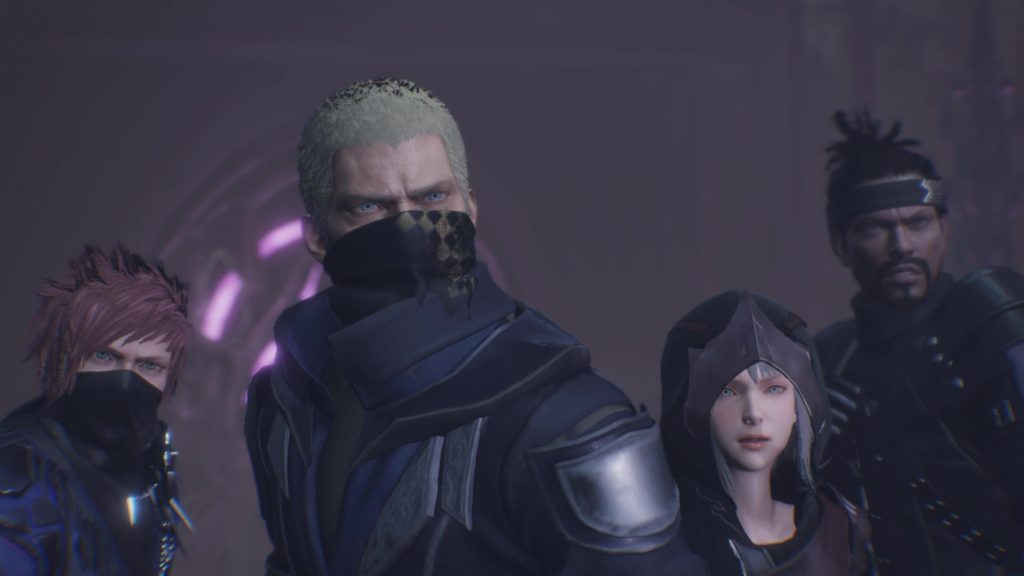
When we first join Jack and his friends, they are fighting Tiamat, a late-game boss from the first Final Fantasy game who has also made guest appearances in a few other installments. But before long, something mysterious happens, Jack and his companions lose their memories in traditional RPG fashion, and Jack specifically is left with one specific urge in his mind: the need, the irresistible desire to defeat “Chaos”.
Final Fantasy veterans will know that Chaos was the demonic-looking final boss of the very first Final Fantasy game on NES, and a figure that has put in an appearance numerous other times in the series since. He plays a key role in the Dissidia series, for example, and he’s a boss in the Omega storyline of Final Fantasy XIV. But in Stranger of Paradise: Final Fantasy Origin, something is… a bit off. No-one seems to quite believe that Chaos is real, though they do believe in the darkness that is shrouding the land, and they do believe in the prophecy that states “four Warriors of Light shall come”.
In some respects, this is quite in keeping with the original Final Fantasy, since Chaos was only really revealed in a bit of a weird “surprise!” twist ending of the original game that never really made all that much sense. But there are a few other things that feel a bit wrong, too.
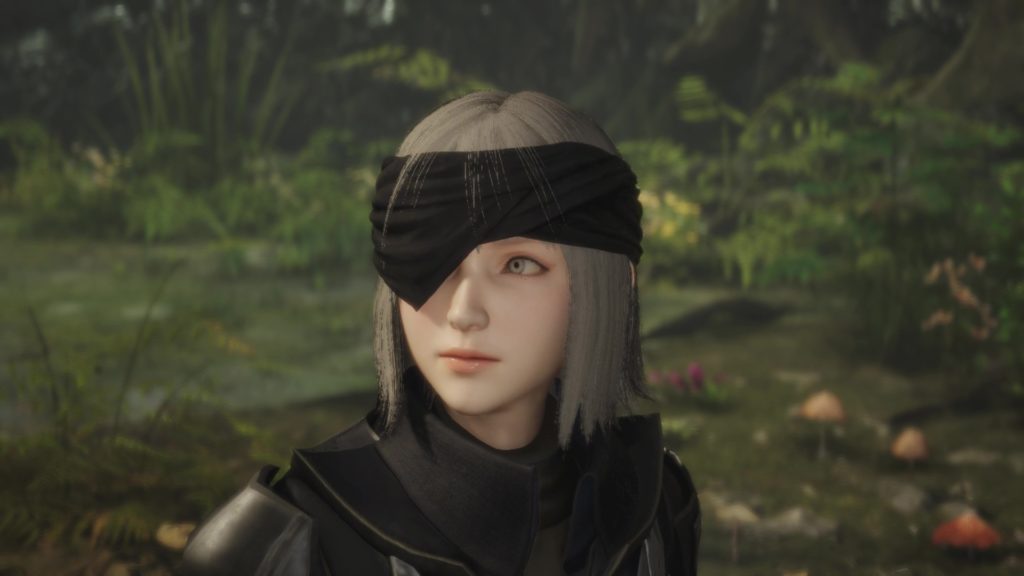
For one, Garland, first boss of the original Final Fantasy, he of the “I will knock you all down” fame and a figure who seemingly appears in the game’s intro sequence, is nowhere to be seen; when Jack and his friends Ash and Jed search the Chaos Shrine, they discover an armoured figure that resembles the stories they’ve heard of Garland, but which, upon its defeat, reveals itself to be a young woman named Neon who, like Jack, had felt an irresistible Chaos-related urge — though in her case, she wanted to become Chaos.
With the addition of Neon to the mix, though, there are now four Warriors of Light — or so everyone believes, anyway, despite their shared tendency to dress entirely in black and the fact they are carrying dark crystals — and thus what follows initially appears, to all intents and purposes, to be “Final Fantasy I Remake”.
By that, I don’t mean “a remake of Final Fantasy I”. I mean “Final Fantasy I given the same treatment as Final Fantasy VII Remake” — that is to say, completely revamping the combat system into something rather more action-based; rejigging the story so that it hits a lot of the same beats but is also noticeably different; and paying homage to a classic game in a brand new way that only today’s technology can achieve. That said, the fact that no-one’s name in Stranger of Paradise’s main party is more than four letters long is a nice, subtle homage to the original.
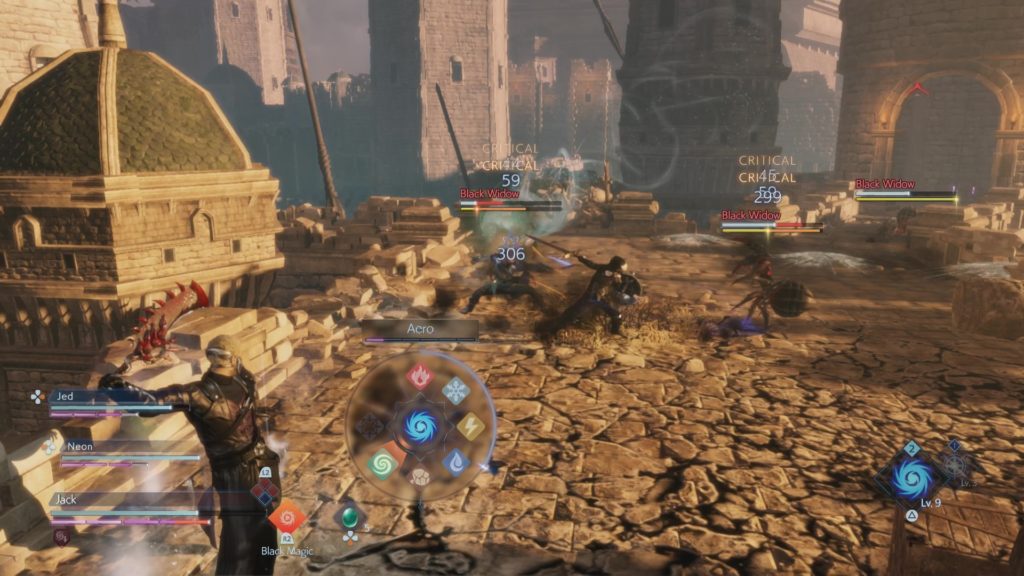
Stranger of Paradise isn’t quite handled in the same way as Final Fantasy VII Remake, mind; rather than unfolding as a continuous narrative with a few “hub” sequences where you can take on sidequests, Stranger of Paradise is instead split into a strictly mission-based format, with each new main story mission unlocking a new dungeon, and each dungeon also having at least one side mission for you to take on once you’ve completed its main mission.
While it would have been fun to have a proper open-world take on the original Final Fantasy, I suspect that was rather outside the scope of this project, and thus the formula used here works quite effectively. It ensures that the narrative keeps flowing forward, for one thing, and also allows the action-based gameplay to consistently shine rather than at any point feeling like a grind. We’ll talk more about the actual gameplay in a moment; for now, there’s a few more interesting little curiosities worth mentioning.
Probably the most immediately noticeable to longstanding fans of Final Fantasy is the fact that although Stranger of Paradise roughly follows the sequence of events that occur in the original Final Fantasy, the actual specific locales you proceed through bear an uncanny resemblance to places from games other than the original Final Fantasy.
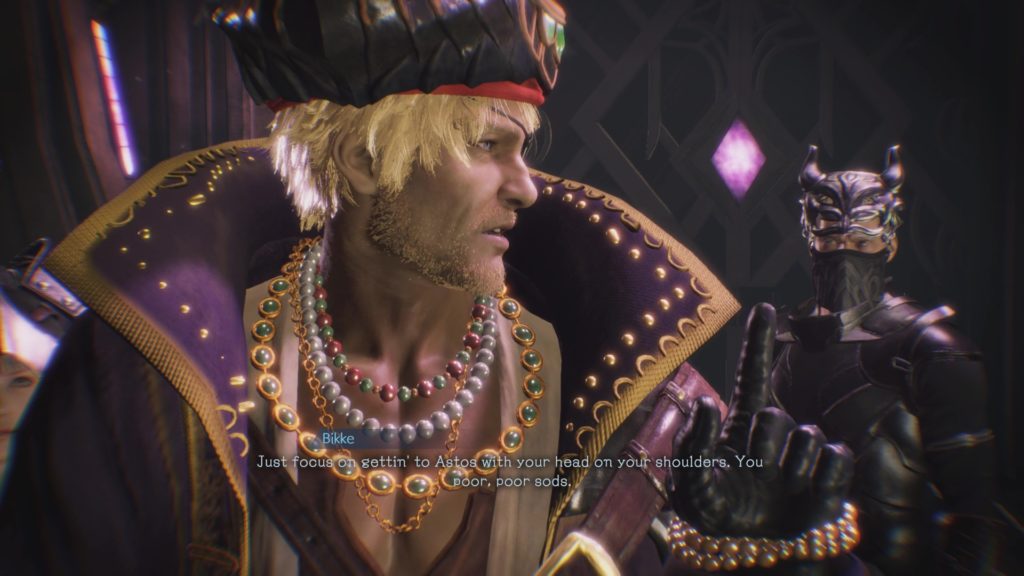
For example, upon reaching the town of Pravoka, where in the original Final Fantasy you would fight the pirate Bikke, save the people and get yourself a ship in a rather hurried series of events, in Stranger of Paradise you hear that Bikke has taken up residence in a nearby cave, and if you want to speak with him you’ll have to brave the dangers of that cave.
Said cave bears an uncanny resemblance to Sastasha Seagrot, the first dungeon in Final Fantasy XIV, and indeed while you’re loading into the area you’re treated to a snippet of lore known as a “Fool’s Missive”, which explains that, indeed, the locale very much resembles somewhere from “Dimension 14”. Elsewhere you’ll find Astos the dark elf hanging out in a take on Pandaemonium from “Dimension 2”, a berserk elemental causing trouble in what is essentially the Sunleth Waterscape from “Dimension 13”, a prototype for Final Fantasy I’s Mirage Tower, which will be familiar in its crystalline form from anyone who has spent time in “Dimension 3”, and plenty more besides.
Each area is really nicely varied and has its own gimmicks to explore rather than simply providing hordes of enemies to fight your way through. The “Sunleth Waterscape” dungeon, for example, sees you manipulating the weather to grow and wither plants in order to open up various pathways, while the “Crystal Tower” dungeon involves a lot of creative use of magic devices in order to proceed. Taken in isolation, they’re solidly designed, interesting dungeons; taken in context of the Final Fantasy series as a whole, they’re absolutely delightful fanservice.
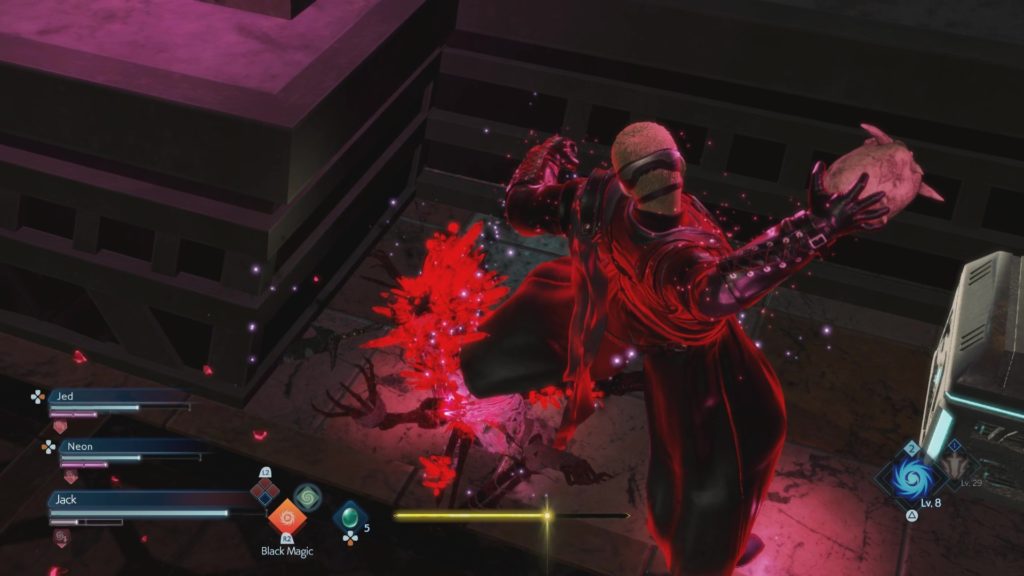
So let’s talk a little about that gameplay. As previously mentioned, Stranger of Paradise is nothing like FromSoftware’s games in that the pace is much quicker even than Bloodborne, and there’s no stamina management involved. This means that you can swing, dodge and defend as much as you want — up to a point in the latter case.
Core to Stranger of Paradise’s combat is a system that the Final Fantasy team first started experimenting with in Final Fantasy XIII, which is a meter separate from an enemy’s HP gauge that represents how close to being “broken” or “staggered” they are. In Final Fantasy XIII, staggering an enemy would allow you to boost your damage considerably while the enemy lay helpless for a brief period; in Stranger of Paradise, breaking an enemy puts them in a completely vulnerable state, allowing Jack to move in and perform an instant-kill “Soul Break” move on them.
These Soul Break moves, it should be added, are consistently hilarious, whether it’s Jack beating a skeleton to (re)death with its own skull, stamping on a robot’s metallic testicles or kicking a Cerberus in the face in the same way that a furious five year old would kick a football when he’s told to come in and have a bath. Oh, and Tonberries? One of the most feared yet strangely adorable enemies in Final Fantasy history — and indeed particularly dangerous here, too? You Soul Break them by giving them headpats. Delightful.
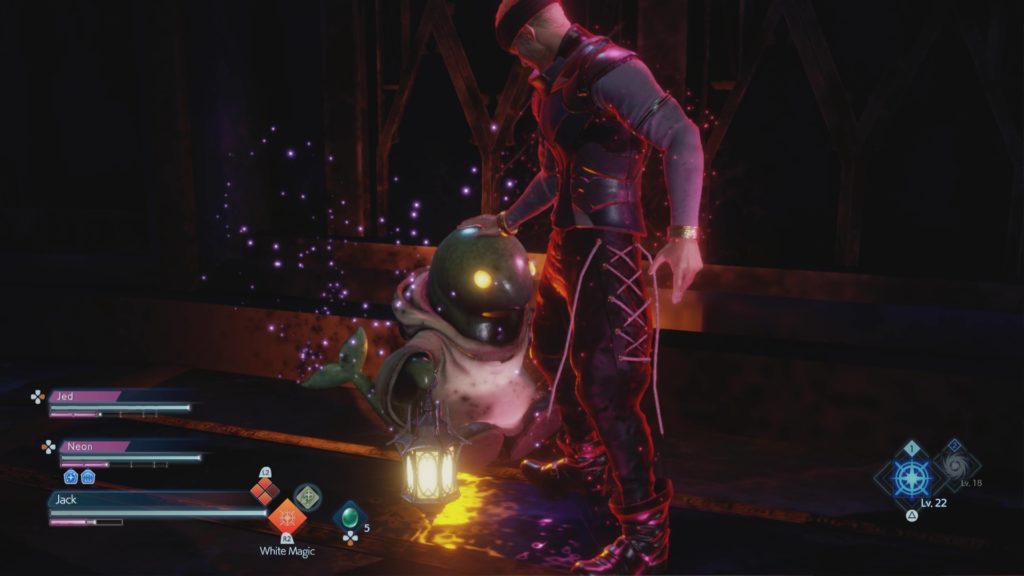
Soul Breaks are for more than just showing off, though. Successfully performing them restores everyone in the party’s MP, as well as increasing their maximum MP slightly. Thus, the more impressively you kill things, the more abilities you’ll be able to make use of in succession before having to recharge your MP with some normal attacks. Get yourself into a good rhythm and you’ll be able to maintain your MP nicely by consuming and restoring it in roughly equal measure. On the flip side, get defeated and you’ll lose maximum MP as well as being reset to a checkpoint, so don’t get too cocky.
As you battle enemies, they’ll make use of various different abilities on them. Skills with a red highlight are unblockable and often have a unique cinematic animation, so you’ll need to dodge these to prevent heavy damage. Skills with a purple highlight can be absorbed with Jack’s Soul Shield ability (which drains his Break gauge rapidly while in use, putting him at risk of being Broken himself), then either fired right back at the enemy who used them (which usually gives them a big hit to their Break gauge) or saved for later. And other skills have clear animation cues that you’ll need to block, parry or dodge.
It will doubtless initially be tempting to simply try hacking and slashing your way through enemies by hammering the R1 button to repeatedly swing, but before long you’ll notice that this has a tendency to leave you open to attack and doesn’t actually deal all that much damage. Instead, you’ll want to weave in Combo skills, which are unique to each weapon (and thus Job) and are triggered by pressing R2 after one, two or three R1 attacks. As you level up each Job, you’ll unlock more skills for each weapon.
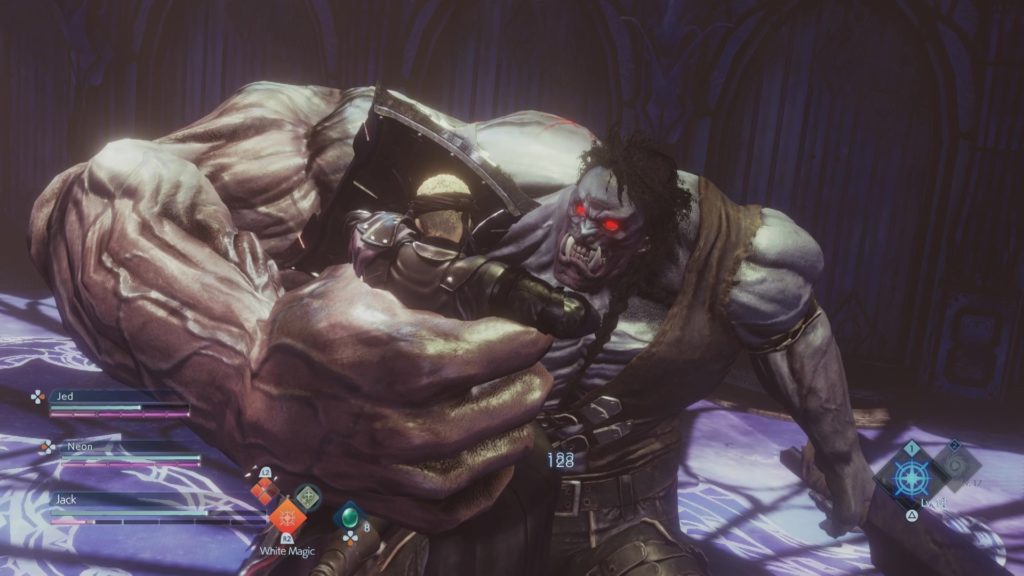
Yes, at heart we’ve got an action combat system somewhat akin to that used in games like the Warriors series and Senran Kagura, albeit with more consistently dangerous (and varied) normal enemies. The “strong” attacks all have specific situational uses in which they’re particularly useful, and many have elemental affinities, too, so assigning them in the way that makes the most sense for the situation you’re in is all but essential.
Alongside this, there are also a number of caster classes, who can hold their own in combat with short-range mace-type weapons in order to build up their stock of MP, but who really shine when casting a spell by holding R2 to charge, the left stick to choose the exact spell from a radial menu, then releasing R2 to fire off the spell. As you might expect, you need to be in a situation where you are not presently being punched in the face to achieve this successfully — which is where your two companions come in.
Yes, for some reason (presumably a technical one) you can only bring two of your three fellow Warriors of Light with you, but they are genuinely useful to have around, since not only do they hold their own in regular combat, often drawing aggro off Jack onto themselves, you can also put them in “Resonance” mode every so often, which means they’ll make heavy use of their own special abilities. This is great for distracting bosses in particular, and can open up opportunities to make use of devastating magic — or simply to slap the boss’ buttocks around a bit using your sharp (or blunt) implement of choice.
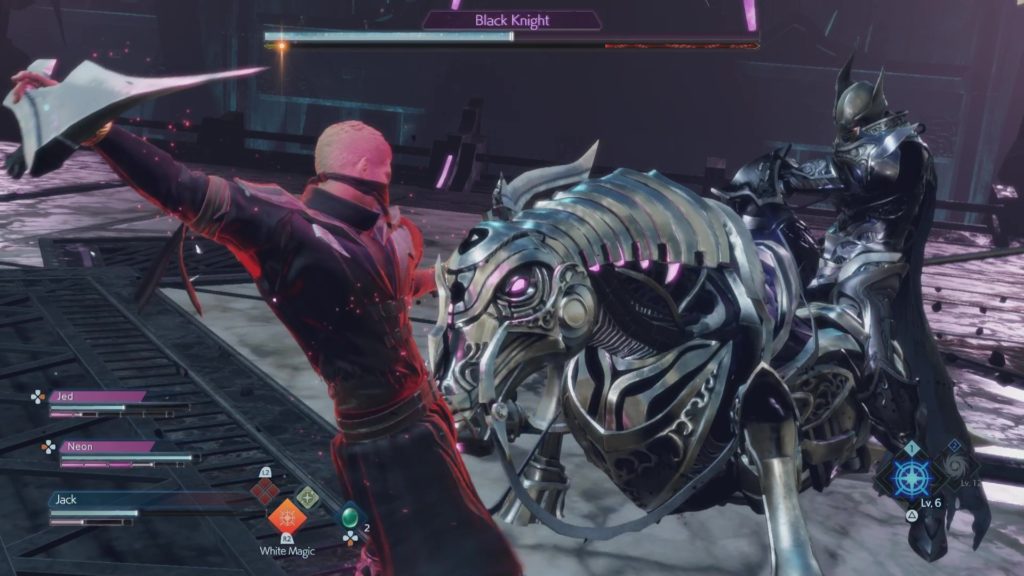
It’s fun, it’s thrilling and it’s challenging. Don’t expect to beat many of the boss encounters first time around, since many of the most fearsome foes in the game favour high-speed attacks and movement with very tight windows of opportunity to get your own attacks in. It’s initially daunting — which may have been part of the reason the game was initially and erroneously compared to Souls titles by some — but with a bit of patience and a willingness to master the mechanics (or drop the difficulty down) you’ll make consistent, satisfying progress.
There’s a lot more that can doubtless be said about Stranger of Paradise: Final Fantasy Origin, but we’ll save that for another day when I’ve had a chance to play a bit further in the main story and explore the mechanics further. For now, though, if you’ve been considering giving this a try, I can wholeheartedly recommend it based on my experiences so far. It’s a game that has gorgeous triple-A production values, but which remembers that player fun is always something which should be prioritised. And it delivers on that in spades — particularly if you’re a Final Fantasy fan.
Oh, also, if you were wondering, the PS4 version runs just fine, too, even on a base model; you can play it in a half-resolution, pixelated “Performance” mode which is pretty smooth and slick at a reasonably consistent 60fps, or in the 30fps “Resolution” mode, which honestly handles perfectly acceptably for a game like this. All screenshots in this article are from the PS4 version in Resolution mode.
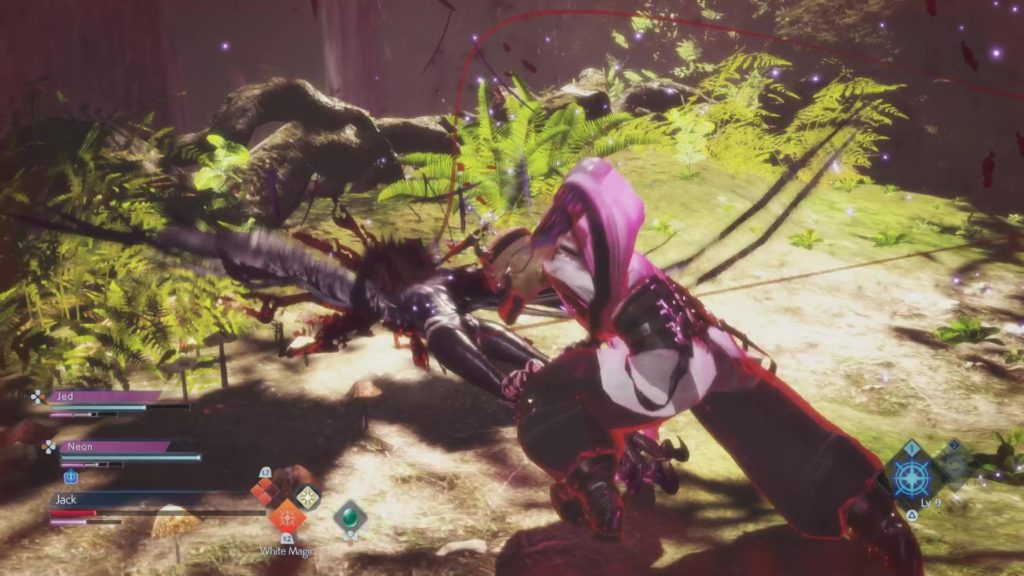
So yeah. Stranger of Paradise: Final Fantasy Origin. I don’t know if anyone was actually expecting it to be good — but it turns out it is. Really good, in fact. Now I’m off to go play a bit more of it.
Stranger of Paradise: Final Fantasy Origin is out now for PlayStation 4 and PlayStation 5, Xbox and Windows PC via Epic Games Store. There are also physical PS4 and PS5 versions with the PS4 edition offering a free upgrade to a digital PS5 copy on disc-based models.
Join The Discussion
Rice Digital Discord
Rice Digital Twitter
Rice Digital Facebook
Or write us a letter for the Rice Digital Friday Letters Page by clicking here!
Disclosure: Some links in this article may be affiliate links, which means we may earn a small commission if you make a purchase after clicking on them. This is at no additional cost to you and helps support Rice Digital!
- Letter from the Editor: passing the torch - June 30, 2023
- Super Woden GP 2 is looking promising - June 30, 2023
- Inti Creates is making a 32 bit-style Love Live action platformer - June 26, 2023





